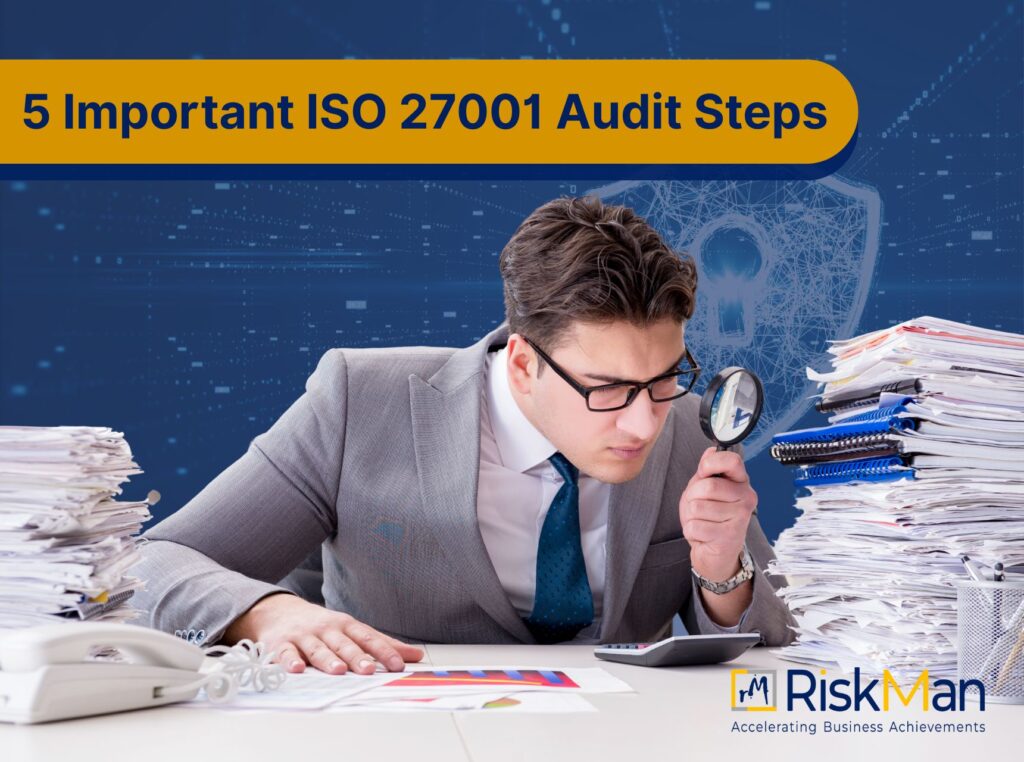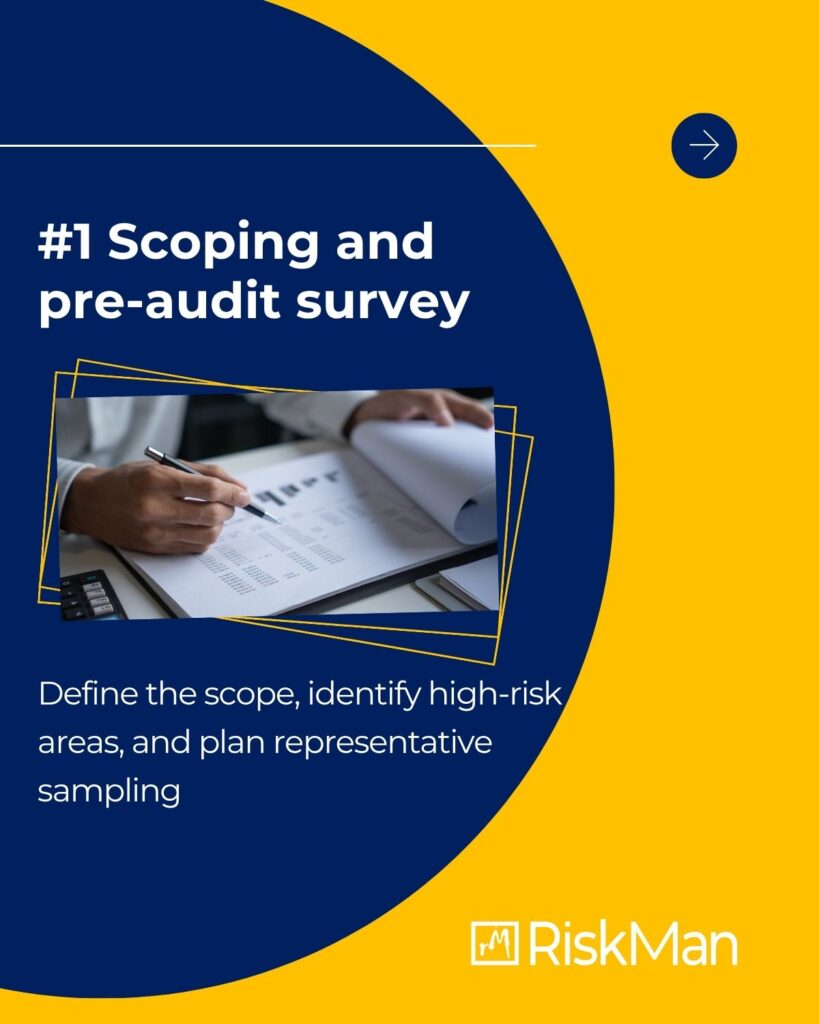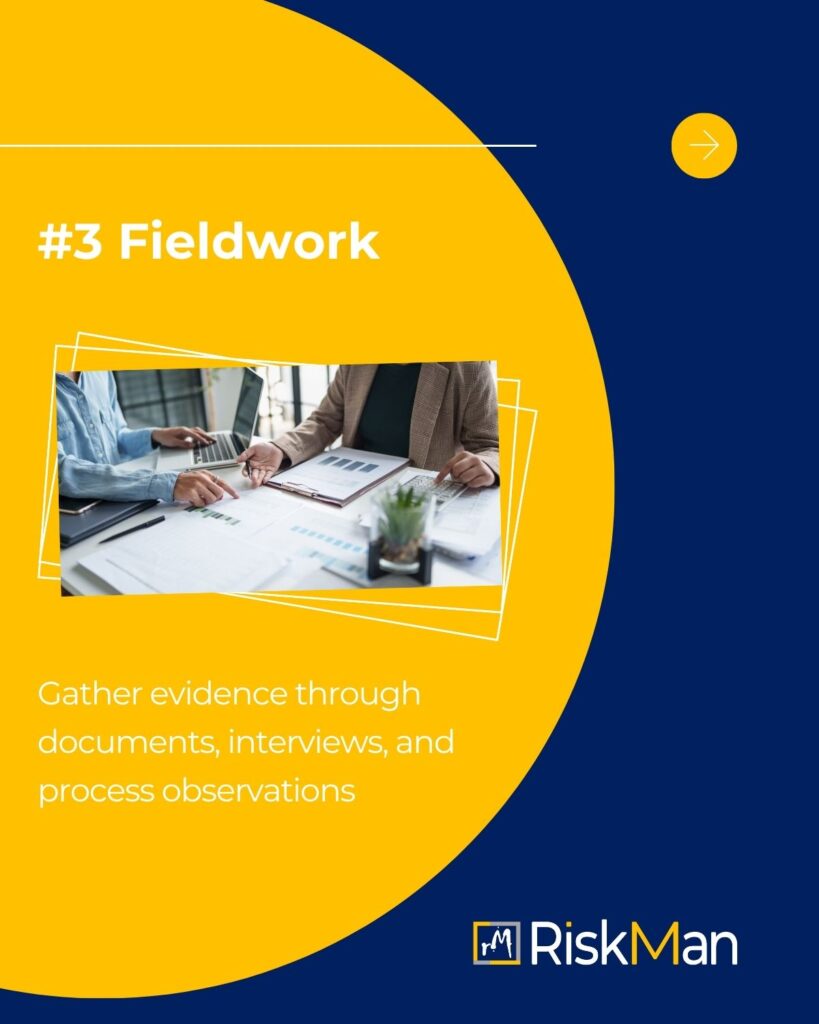
Businesses need to create trust among their stakeholders regarding how securely they are managing the data. This creates confidence among these stakeholders that data security is properly established and that continuous growth will occur. The use of an internationally accepted framework is the most effective way of creating trust among stakeholders.
ISO 27001 is one of the most effective internationally recognized standards that provides data security. Companies are mostly utilizing this data security framework because it provides a competitive edge to the companies. It will be possible for you to sustain a long-term trust among the stakeholders with the help of the ISO 27001 framework. This blog has discussed the five important ISO 27001 audit steps for you to conduct a successful journey towards trust building.
Table of Contents
What Is an ISO 27001 Audit?
Organizations can successfully evaluate the Information Security Management System (ISMS) with the help of an ISO 27001 audit. This audit helps to determine the ISMS compliance of your company and whether it meets the standard requirements or not.
It is possible to analyze the efficiency of the information security, risk management processes, and security controls with the help of this audit. Overall, it ensures that ISMS is protecting sensitive data, maintaining the confidentiality of the data and the overall system, and lastly assuring availability.
Types of ISO 27001 Audit
ISO 27001 audit can be differentiated into two types: internal audits and certification audits. Both of these audits try to measure ISO 27001 compliance. However, the purpose of using these audits within an organization is different.
The function of an internal audit is to establish the effectiveness of the ISMS usage and whether it meets the standard requirements or not. So, the primary focus is to identify effectiveness.
The role of certification audits goes beyond effectiveness. This audit focuses on determining the effectiveness of the actions while meeting ISMS standards. Along with that, it also focuses on providing a certification to the company to prove the standards in the form of ISO 27001 certification.
Five Important ISO 27001 Audit Steps
Having a step-by-step audit process is required for every company to create successful ISO 27001 audit compliance. The most important ISO 27001 Audit steps are mentioned below:
Scoping and Pre-audit Survey
Organizations are required to effectively assess the risk of the overall data security process with the help of ISO 27001. It is possible for your company to achieve information security in a cost-efficient way.

This step requires more frequent auditing of the most critical stages. It is important because a higher assurance level provides a higher amount of effectiveness. It is especially required to provide a thorough and frequent audit for the recurring issues until they are solved.
Auditors are advised to collect a representative sample to get a bigger picture of ISMS. The main purpose of the audits is to collect the sampling data, and in this way, the risk controls can be easily and frequently audited.
Every auditor needs to keep this thought in mind whenever the audit scope is being counted. The pre-audit survey also provides the opportunity for the auditors to identify and store the data that will be reviewed during the audit.
Planning and Preparation
Once the ISMS pre-audit and audit scope stage is done, it is important to plan the auditing process in detail. The work plan of the ISMS audit involves identifying the required time and resources for the project. Many project planning tools, such as a Gantt chart, are helpful in this step.
Planning and preparation steps help to set boundaries for the overall project while identifying possible opportunities for the auditors. It is possible for the auditors to identify the issues, raise concerns about the issues, and finally manage those concerns during this process.
The risks of the projects are identified with the amount of time each step would take during the overall process. The non-conformity of the timeline highlights the risk percentage of a particular task.
Fieldwork
The creation of the ISMS audit workplan can be considered as a theoretical approach for completing a project. The project can achieve a higher amount of success when it has enough evidence for success.
ISMS documents, such as policies and procedures, help to generate enough evidence. This is the first step of the fieldwork stage since the auditor can gather information that is already available within the organizational database.
It is also possible to gather evidence with the help of staff interviews who are responsible for ISMS handling. Finally, the live observation of the ISMS process can also help the auditors with the data collection process.

The findings of the available documents and conducting audits based on that data provide the requirement for any other type of data, such as interviews. It is possible for the auditors to identify whether the interviews are required or not with the help of the initial test.
Analysis
Every audit data needs to be analyzed properly for proper risk assessment. The main purpose is to sort, file, and review the data so the risks and objectives can be managed. The analysis helps to identify the current gaps within the process with the help of the gathered evidence.
This also helps to identify the need for further audit tests. The auditors will be able to conduct further audit tests or refrain from doing so with the analyzed data from this step.
Reporting
Reporting is the most essential step among other steps, as this provides a clear structure to the report. It is possible to properly clarify the audit scope, required timing, project objectives, and current work performance. This step provides an overall summary of the audit findings so that a brief analysis and conclusion can be created.
The detailed findings of the audit can be presented with the help of proper reporting. It highlights whether the project has been properly following the guidelines or not. Further recommendations can be provided with the help of reporting.
Reporting also highlights whether the project has been properly following the circulation and classification guidelines or not. The detailed recommendations gathered with the help of reporting further help to identify the scope limitation areas during the auditing process.
Auditors are required to create a draft material that can be further discussed with the higher management authority for further improvement. Further discussion is usually required, as acceptance of the report would also create the need to make an action plan to improve the situation.
Conclusion
The collection of the ISO 27001 certification cannot happen overnight. The auditors need to be strategic and consistent with the process. The most important ISO 27001 audit steps are mentioned within the blog, and the auditors need to always follow these steps so that the auditing process can be completed smoothly and be a success.
Managing all these steps can be challenging and overwhelming. However, with the right guidance and support, it is possible for you to complete all these steps. RiskMan Consulting provides ISO 27001 audit support, and with the help of our service, you will be able to conduct a successful audit process in your organization as well. For more insights on ISO 27001 auditing services, follow our latest blogs.

Write A Comment